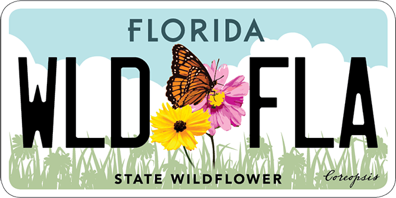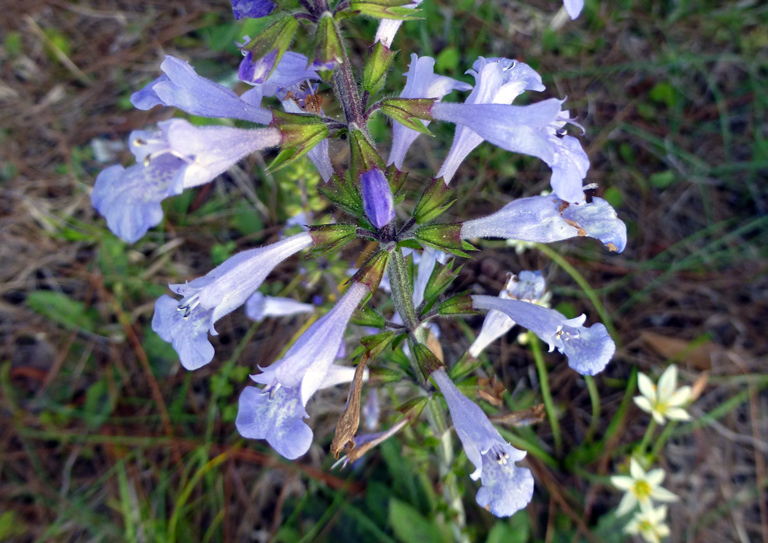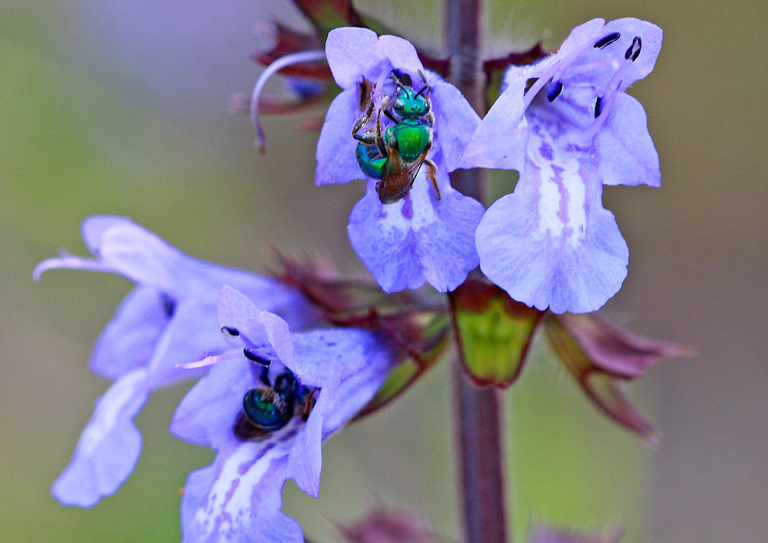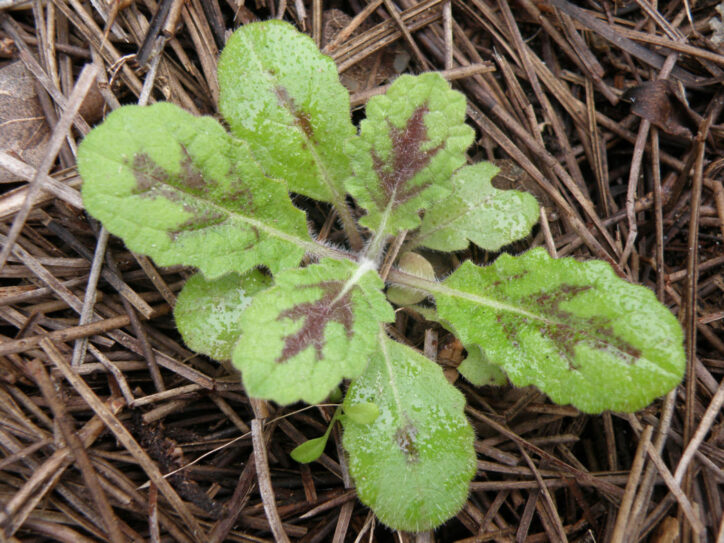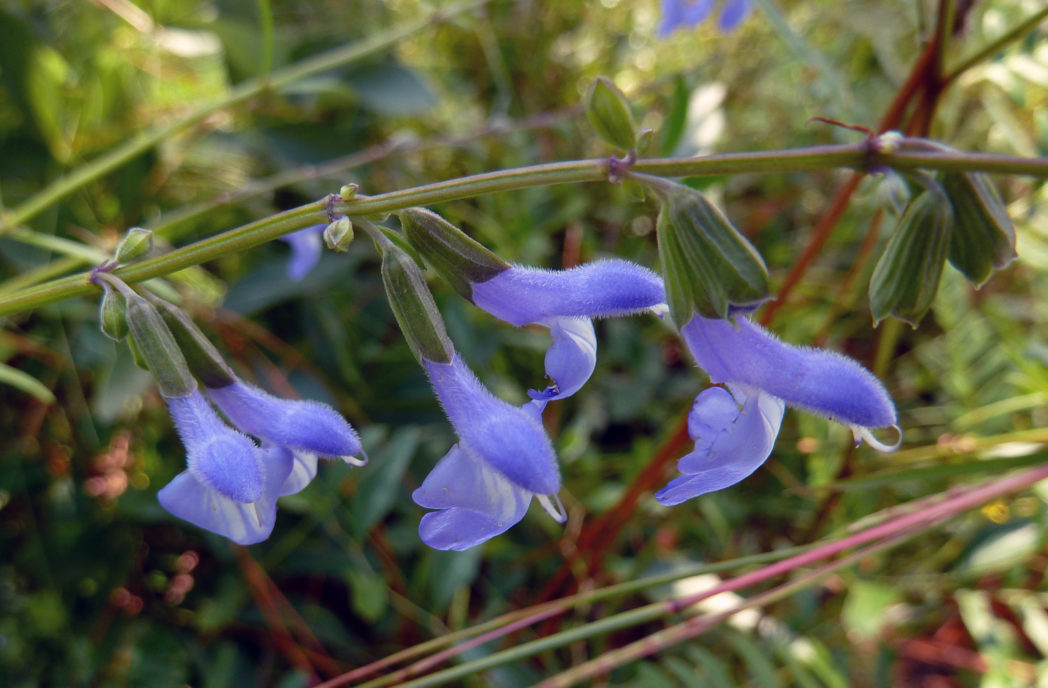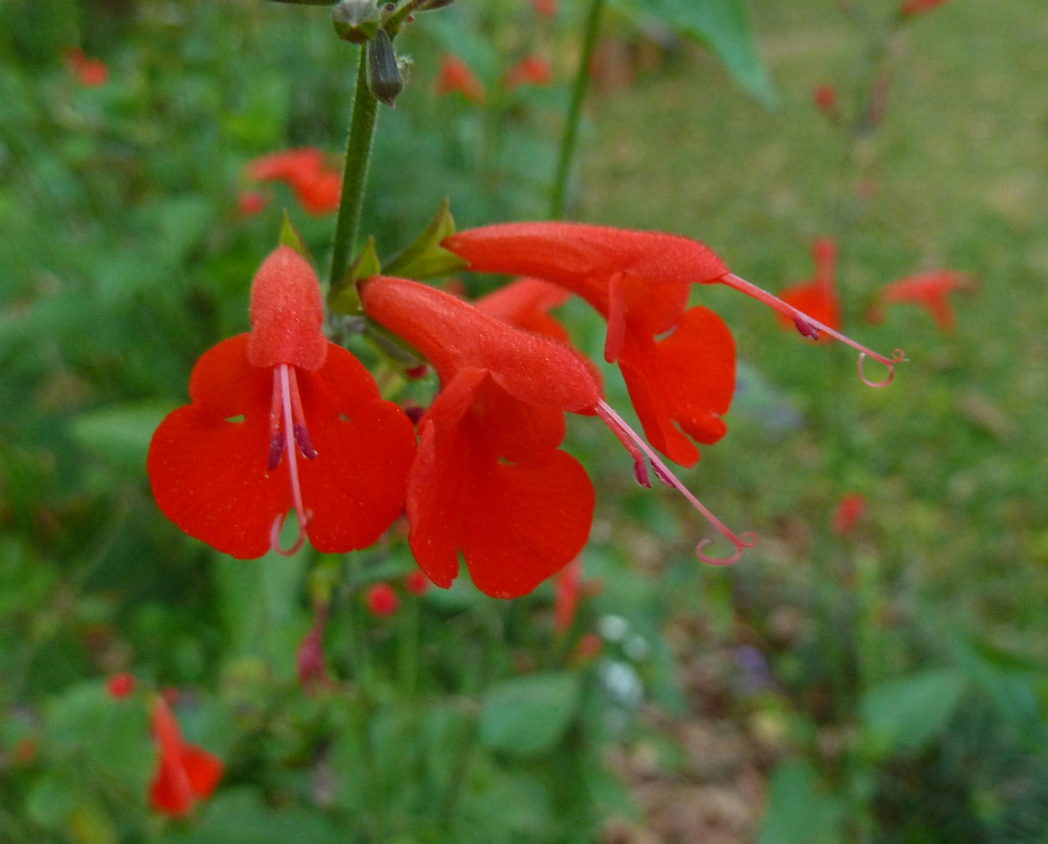Lyreleaf sage
Pictured above: Lyreleaf sage (Salvia lyrata) by Eleanor Dietrich. Click on terms for botanical definitions. View as a PDF.
Lyreleaf sage is an attractive perennial found naturally along woodland edges, in open areas and in disturbed sites. It typically flowers in late winter through late spring. Bees are its predominant pollinator, but it also attracts butterflies and occasionally, hummingbirds.
Lyreleaf sage produces leafless spikes of lavender to bluish tubular flowers. Like other members of the mint family, its flowers are two-lipped and its stem is square. The leaves, which appear as basal rosettes, are lyre-shaped (hence the common name) with irregular margins and purplish-red to brownish patches along their midribs. This distinct marking makes the plant easy to identify, even when it is not flowering.
Family: Lamiaceae (Mint family)
Native range: Throughout Florida except southernmost counties
To see where natural populations of Lyreleaf sage have been vouchered, visit florida.plantatlas.usf.edu.
Lifespan: Perennial
Soil: Moist to dry, well-drained soils
Exposure: Partial shade to nearly full sun
Growth habit: 1–2’; rosettes can have a spread of up to 1’
Propagation: Seeds, division
Florida regions of landscape suitability: North, Central, South
Garden tips: Lyreleaf sage is highly adaptable to a variety of conditions and can tolerate both drought and flooding. It does well along roadsides and trail edges. In a landscape, it can be planted with grasses and other groundcovers, as it responds well to mowing. It is easily propagated by root division and seed; plants grown from seed can reach the flowering stage in only a few months. Lyreleaf sage is a prolific self-seeder and can spread quickly, but can be easily managed in a landscape by deadheading and removing seedlings.
Lyreleaf sage is often available at nurseries that specialize in native plants. Visit PlantRealFlorida.org to find a native nursery on your area.
Learn more about Lyreleaf sage from the Florida Native Plant Society and the Institute for Regional Conservation.
For information on other Salvia species, see these resources:
